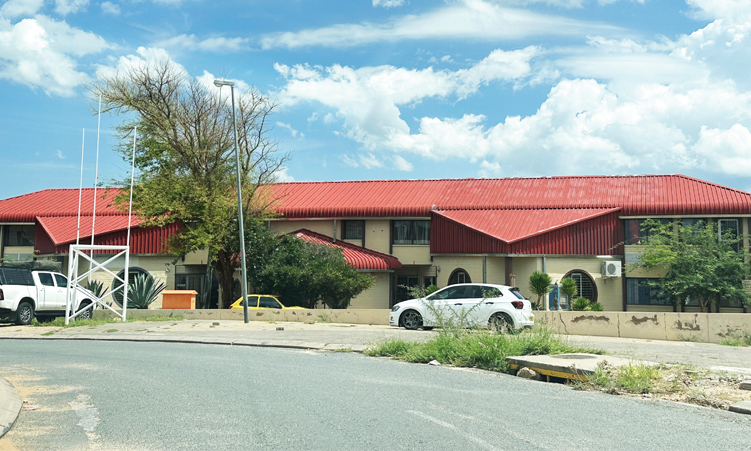JOHANNESBURG – Women are the number one target of AIDS in Africa, facing a greater risk of infection than men and shouldering the burden that illness brings to their families, a UN AIDS report said yesterday.
“Nowhere is the epidemic’s ‘feminisation’ more apparent than in sub-Saharan Africa, where 57 per cent of adults infected are women and 75 per cent of young people infected are women and girls,” said the UN’s 2004 Global Report on AIDS. While women living with HIV were vastly outnumbered by men in the early years of the epidemic, “today, there are, on average, 13 infected women for every 10 infected men – up from 12 infected women for every 10 infected men in 2002″, the report said.The difference in infection levels between women and men is even sharper among young people aged 15 to 24.The ratio ranges from 20 women for every 10 men infected in South Africa to 45 women for every 10 men in Kenya and Mali.Africa’s male-dominated culture means that women are the carers and guardians of family life, with many in poor rural communities spending their days cleaning, washing clothers, fetching wood and water, and cooking.”This means they bear the largest AIDS burden,” said the report.”Families may withdraw young girls from school to care for ill family members with HIV.Older women often shoulder the burden of care when their adult children fall ill.”Women widowed by AIDS may lose their land and property after their husbands die due to the lack of laws protecting their inheritance rights.The report called for action to help Africa’s women including the establishment of community safety-net programmes and other initiatives to empower women.The report said the impact of AIDS on households could be “especially severe when the infected individual is an adult woman.””In societies defined by extensive labour migration systems – including many of those hardest hit by the AIDS epidemic in southern Africa – women head the majority of households, especially in rural areas.””In Manicaland, Zimbabwe, when a woman died from AIDS, in two out of three cases households dissolved,” the report said.The number of AIDS orphans in sub-Saharan Africa has shot up from 9,6 million in 2001 to 12,1 million in 2003, the report said.Sub-Saharan Africa is home to about 25 million people living with HIV and AIDS, who represent about two-thirds of the world’s population affected by the pandemic.Some three million people were diagnosed with AIDS and HIV in 2003 and 2.2 million died from it, said the report.Swaziland and Botswana top the list of countries with the highest prevalence rates, at 38,8 per cent and 37,3 per cent in 2003.Life expectancy in southern Africa, the world’s hardest-hit region by AIDS, has dropped to 49, 13 years less than in the absence of AIDS, the report said.Without large-scale treatment, it could plummet to below 35 in Swaziland, Zambia and Zimbabwe, it warned.”In the worst affected countries of eastern and southern Africa the probability of a 15-year-old dying before reaching age 60 has risen dramatically,” said the report.In north Africa, the UN report noted that systematic surveillance of the epidemic was not well-developed there.”There is inadequate monitoring of the situation among populations at higher risk of HIV exposure, such as sex workers, injecting drug users and men who have sex with men,” it said.”This means that the potential epidemics in these populations are being overlooked.”- Nampa-AFPWhile women living with HIV were vastly outnumbered by men in the early years of the epidemic, “today, there are, on average, 13 infected women for every 10 infected men – up from 12 infected women for every 10 infected men in 2002″, the report said.The difference in infection levels between women and men is even sharper among young people aged 15 to 24.The ratio ranges from 20 women for every 10 men infected in South Africa to 45 women for every 10 men in Kenya and Mali.Africa’s male-dominated culture means that women are the carers and guardians of family life, with many in poor rural communities spending their days cleaning, washing clothers, fetching wood and water, and cooking.”This means they bear the largest AIDS burden,” said the report.”Families may withdraw young girls from school to care for ill family members with HIV.Older women often shoulder the burden of care when their adult children fall ill.”Women widowed by AIDS may lose their land and property after their husbands die due to the lack of laws protecting their inheritance rights.The report called for action to help Africa’s women including the establishment of community safety-net programmes and other initiatives to empower women.The report said the impact of AIDS on households could be “especially severe when the infected individual is an adult woman.””In societies defined by extensive labour migration systems – including many of those hardest hit by the AIDS epidemic in southern Africa – women head the majority of households, especially in rural areas.””In Manicaland, Zimbabwe, when a woman died from AIDS, in two out of three cases households dissolved,” the report said.The number of AIDS orphans in sub-Saharan Africa has shot up from 9,6 million in 2001 to 12,1 million in 2003, the report said.Sub-Saharan Africa is home to about 25 million people living with HIV and AIDS, who represent about two-thirds of the world’s population affected by the pandemic.Some three million people were diagnosed with AIDS and HIV in 2003 and 2.2 million died from it, said the report.Swaziland and Botswana top the list of countries with the highest prevalence rates, at 38,8 per cent and 37,3 per cent in 2003.Life expectancy in southern Africa, the world’s hardest-hit region by AIDS, has dropped to 49, 13 years less than in the absence of AIDS, the report said.Without large-scale treatment, it could plummet to below 35 in Swaziland, Zambia and Zimbabwe, it warned.”In the worst affected countries of eastern and southern Africa the probability of a 15-year-old dying before reaching age 60 has risen dramatically,” said the report.In north Africa, the UN report noted that systematic surveillance of the epidemic was not well-developed there.”There is inadequate monitoring of the situation among populations at higher risk of HIV exposure, such as sex workers, injecting drug users and men who have sex with men,” it said.”This means that the potential epidemics in these populations are being overlooked.”- Nampa-AFP
Stay informed with The Namibian – your source for credible journalism. Get in-depth reporting and opinions for
only N$85 a month. Invest in journalism, invest in democracy –
Subscribe Now!










